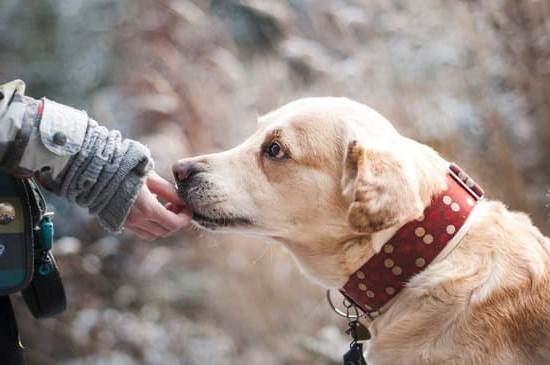Are you looking for a effective and innovative way to potty train your dog? Look no further than bell training.
This method has been proven to be an efficient and reliable way to teach your furry friend when and where to do their business. In this article, we will explore the concept of bell training for potty training dogs, the benefits of using a bell, how to choose the right one, step-by-step guide on how to introduce it to your dog, troubleshooting common issues, maintaining consistency and patience, as well as advanced tips and tricks.
Bell training is a popular and successful method for potty training dogs. By teaching your dog to ring a bell when they need to go outside, you are providing them with a clear and tangible signal for potty time. This not only reduces accidents in the house but also helps in establishing a routine for your pet. The key to success with bell training lies in understanding its principles and implementing them effectively.
In the following sections of this article, we will delve into the benefits of using a bell for potty training, provide tips on choosing the right bell for your dog, and offer a comprehensive step-by-step guide on introducing the bell to your dog for potty training. Additionally, we will address common issues that may arise during bell training and offer strategies for reinforcing this method.
We will also emphasize the importance of consistency and patience in successful potty training using a bell. Stay tuned as we uncover all you need to know about this innovative approach.
Benefits of Using a Bell for Potty Training
One of the main advantages of using a bell for potty training your dog is that it provides a clear and consistent signal for your pet to communicate when they need to go outside. This can be especially helpful for dogs who may not exhibit obvious signs, such as scratching at the door or whining, when they need to relieve themselves.
By associating the sound of the bell with going potty, your dog learns to use this as a cue for signaling their needs.
Another benefit of bell training is that it helps in developing communication between you and your dog. It establishes a routine and a means of understanding each other’s signals, ultimately strengthening the bond between you and your pet. This method also gives your dog a sense of control over their environment, as they are able to actively participate in alerting you about their bathroom needs.
Moreover, using a bell for potty training can be particularly effective for puppies or older dogs who may have difficulty with traditional methods of housebreaking. The auditory cue provided by the bell can be easier for them to understand and remember compared to other visual or tactile signals. Ultimately, incorporating the use of a bell into your potty training routine can lead to faster and more successful results in teaching your dog where and when they should go potty.
| Advantages | Description |
|---|---|
| Clear Communication | The bell provides a clear signal for when the dog needs to go outside. |
| Bond Strengthening | It fosters communication and strengthens the bond between owner and pet. |
| Effective for puppies/older dogs | The auditory cue can be easier for these dogs to understand. |
Choosing the Right Bell
When it comes to potty training your dog using a bell, choosing the right bell is essential for the success of this method. Here are some tips on selecting the appropriate bell for your dog:
- Size and Sound: It’s important to choose a bell that is the right size for your dog and produces a sound that can be easily heard. For smaller dogs, a lighter bell with a softer tone may be more suitable, while larger dogs may require a larger, louder bell.
- Durability: Look for a bell that is durable and can withstand daily use. Dogs can be quite enthusiastic when it comes to ringing the bell, so it’s important to choose one that can hold up over time.
- Mounting Options: Consider how you will attach the bell to your door or wall. Some bells come with convenient mounting options such as adhesive strips or hooks, while others may require additional hardware for installation.
Additionally, consider your dog’s personality and behavior when choosing a bell. If your dog is easily startled by loud noises, opt for a gentler sounding bell. On the other hand, if your dog is particularly energetic and playful, a sturdier, more resilient bell may be necessary.
By taking these factors into consideration, you can select a bell that is well-suited to your dog’s needs and preferences, setting them up for success in learning to associate the bell with potty time. Once you have chosen the right bell, you can proceed with introducing it to your dog as part of their potty training routine.
Step-by-Step Guide
Introducing your dog to the concept of using a bell for potty training can be a game-changer in your efforts to housebreak your furry friend. The first step is to select the right bell for your dog. Consider the size and sound of the bell, as well as its durability. Once you have chosen a bell, it’s time to start the introduction process.
Begin by hanging the bell in a location that is easily accessible to your dog near the door that you typically use to take them outside for bathroom breaks. Encourage your dog to sniff and inspect the bell, allowing them to get comfortable with its presence. You can also gently ring the bell yourself to familiarize them with the sound.
Next, every time you take your dog outside for a potty break, stop by the bell and gently nudge it with their paw or nose before opening the door. This action will help them associate ringing the bell with going outside. Consistency is key during this stage, so be sure to follow this routine each time you take them out.
As they begin to make progress and show signs of understanding that ringing the bell leads to going outside, be sure to praise and reward them each time they successfully use the bell before going out. Positive reinforcement will reinforce their behavior and make them more likely to continue using the bell for potty breaks in the future.
Remember that patience is crucial during this process – every dog learns at their own pace, so don’t get discouraged if it takes some time for them to fully grasp the concept.
Reinforcing the Bell Training
Once your dog has shown initial understanding of the bell as a signal for potty time, it is crucial to reinforce this association to ensure consistent success in potty training. Here are some effective strategies for reinforcing the bell training:
- Consistent schedule: Establishing a consistent potty schedule for your dog will help reinforce the bell training. Take your dog out at the same times every day, such as first thing in the morning, after meals, and before bedtime.
- Positive reinforcement: Whenever your dog rings the bell and successfully goes potty outside, be sure to praise and reward them. Use treats or verbal praise to positively reinforce their behavior and make them more likely to repeat it.
- Ignore false alarms: If your dog begins to use the bell excessively or inappropriately, it’s important not to give in to their demands every time. Ignoring false alarms will prevent reinforcement of unwanted behavior.
By consistently implementing these strategies, you can ensure that your dog properly associates the bell with potty time. This will ultimately lead to successful and reliable potty training using a bell.
Remember that consistency is key when reinforcing bell training for potty time. Be patient with your dog as they continue to learn and always provide positive reinforcement for desired behavior. With dedication and perseverance, you can effectively establish a strong association between the bell and potty time for your furry friend.
Troubleshooting Common Issues
Confusion and Barking
One common issue that arises during bell training is confusion or barking. Some dogs may initially become confused about the purpose of the bell, leading to barking or excessive ringing without actually needing to go outside. To address this issue, it’s important to supervise your dog closely during the initial stages of bell training.
If you notice your dog simply playing with the bell or ringing it for attention, gently redirect their focus and only take them outside when they genuinely need to use the bathroom. Consistency and patient reinforcement will help your dog understand the proper use of the bell.
Inconsistent Use of Bell
Another challenge in bell training is inconsistent use of the bell by either the dog or the owner. If your dog only rings the bell sometimes or if you forget to respond when they do ring it, this inconsistency can hamper the progress of potty training. To troubleshoot this issue, create a set routine for using the bell and take your dog outside consistently after each ringing.
Additionally, avoid scolding your dog if they ring the bell frequently; instead, reinforce positive behavior with treats and praise. Over time, consistent reinforcement will help your dog understand that using the bell leads to successful bathroom breaks.
Fear or Avoidance of Bell
Some dogs may exhibit fear or avoidance towards the bell, making it challenging to continue with potty training using this method. In such cases, it’s important to desensitize your dog to the sound of the bell through gradual exposure and positive associations. Start by introducing the sound of the bell from a distance and rewarding your dog for calm behavior.
Gradually decrease the distance while continuing to provide positive reinforcement until your dog becomes comfortable with the sound. Patience is key in addressing fear or avoidance issues related to bell training, as rushing this process can further exacerbate these behaviors.
Consistency and Patience
Patience is also crucial when it comes to bell training. Every dog learns at its own pace, so it’s important to remain patient throughout the process. Some dogs may pick up on the bell training quickly, while others may take more time to fully grasp the concept. It’s essential to remain calm and understanding, providing positive reinforcement and encouragement as your dog learns how to signal their need to go outside.
Another aspect of consistency is maintaining a regular potty schedule for your dog. Taking them out at the same times each day will help reinforce their understanding of when it’s appropriate to ring the bell. Consistently rewarding your dog for successfully using the bell will also reinforce their behavior and motivate them to continue signaling when they need to go outside.
| Factor | Importance |
|---|---|
| Consistency | Establishes a clear routine for your dog and reinforces their understanding of using the bell for potty time. |
| Patience | Allows your dog time to learn at their own pace without becoming stressed or frustrated. |
| Potty Schedule | Reinforces consistent cues and signals for potty time, making it easier for your dog to understand when it’s time to ring the bell. |
Advanced Tips and Tricks
Once your dog has mastered the basics of bell training for potty training, there are additional techniques you can use to further refine their skills and maintain success. One advanced tip is to vary the location of the bell in your home.
By doing so, you can help your dog generalize their understanding of the bell’s purpose across different areas of the house. This will ensure that no matter where they are when they need to go outside, they will know how to signal their need to you.
In addition to varying the bell’s location, you can also introduce different signals for your dog to use in conjunction with the bell. For example, teaching them to bark or sit by the door after ringing the bell can provide additional communication about their potty needs. This allows for more clear and specific cues from your dog, making it easier for you to understand their needs and respond accordingly.
Another advanced technique is to gradually increase the amount of time between potty breaks as your dog becomes more adept at using the bell. This will not only help refine their bladder control, but also reinforce the association between ringing the bell and going outside. By slowly extending the time between potty breaks, you can continue to solidify your dog’s understanding of when it is appropriate to use the bell, leading to even greater success in potty training.
Conclusion
In conclusion, bell training is a highly effective method for potty training dogs and offers numerous benefits. By using a bell, you can improve communication with your pet and reduce the chances of accidents occurring in the house. This technique also helps dogs develop a strong association between ringing the bell and going outside to relieve themselves, making it a convenient and reliable solution for both pet owners and their furry companions.
When choosing a bell for your dog, opt for one that is durable, easy to use, and produces a distinct sound. Introducing the bell to your dog should be done gradually and patiently, allowing them to become familiar with it before incorporating it into their potty training routine. Consistency is key in reinforcing bell training, and techniques such as positive reinforcement can help solidify your dog’s understanding of this method.
While some challenges may arise during the bell training process, troubleshooting issues like confusion or hesitation can be addressed with patience and persistence. Additionally, advanced tips and tricks can further refine bell training and contribute to long-term potty training success.
By investing time and effort into this approach, pet owners can enjoy the convenience of having a well-potty trained dog who responds reliably to the sound of a bell when nature calls. Give bell training a try – it can make a significant difference in your dog’s potty habits and overall quality of life for both you and your beloved pet.
Frequently Asked Questions
Do Bells Help Potty Train a Dog?
Bells can be a helpful tool in potty training a dog. When the dog learns to associate ringing the bell with going outside to relieve itself, it can be a useful and clear way for the dog to communicate its needs.
How Do You Train Your Dog to Ring a Bell When It Needs the Toilet?
Training a dog to ring a bell when it needs to go to the toilet involves teaching them to nudge or ring the bell when they need to go outside. This can be done by consistently pairing the action of going outside with ringing the bell, and providing positive reinforcement each time they do so successfully.
What Is the Hardest Dog to Potty Train?
The hardest dog breeds to potty train are typically those that are more independent or stubborn, such as Afghan Hounds, Basenjis, and Bulldogs. These breeds may require more patience and creative training methods when it comes to potty training.

Welcome to the blog! I am a professional dog trainer and have been working with dogs for many years. In this blog, I will be discussing various topics related to dog training, including tips, tricks, and advice. I hope you find this information helpful and informative. Thanks for reading!





